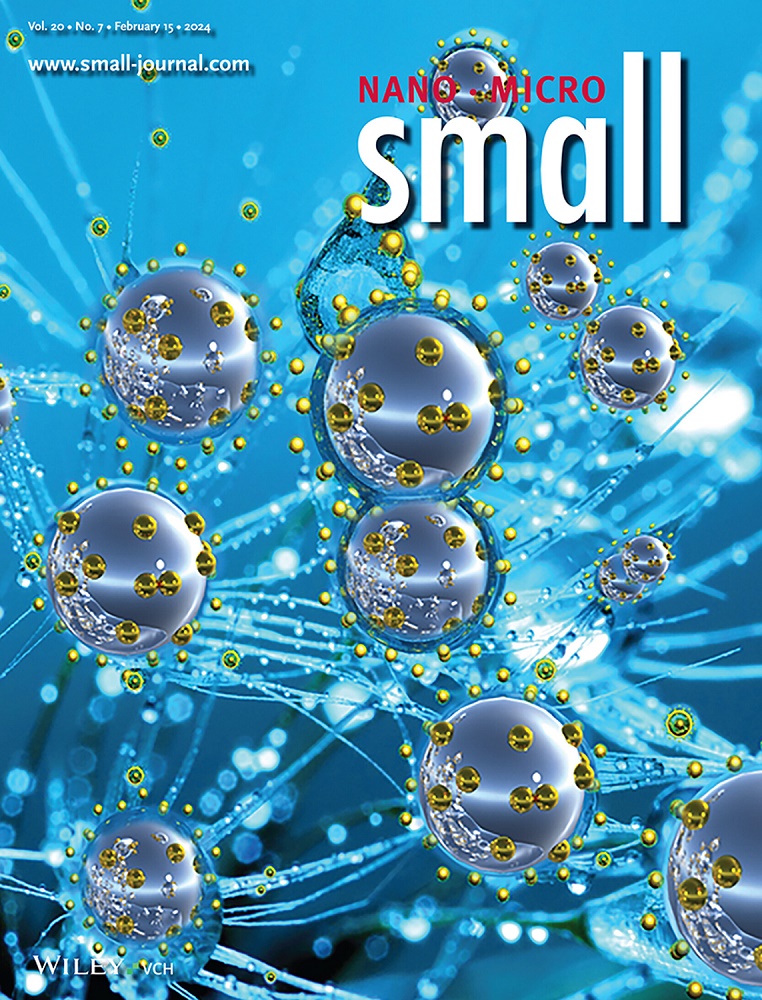Self-Assembled Photothermal Particles Boost Synergistic Biofilm Eradication and Remineralization in Early Dental Caries Treatment.
IF 13
2区 材料科学
Q1 CHEMISTRY, MULTIDISCIPLINARY
引用次数: 0
Abstract
Dental caries, driven by dietary habits and microbial biofilms, remains a significant global health issue. In situ biomimetic remineralization is considered a promising method, but its low efficiency is a key challenge. Additionally, the interference of cariogenic bacteria further exacerbates the problem. In this study, self-assembled photothermal particles (PAEB) with light-boosted synergistic biofilm eradication and remineralization properties for caries treatment are reported. Composed by polyaspartic acid-stabilized amorphous calcium phosphate (Pasp-ACP) and ε-poly-L-lysine/baicalein (EPL-BC), PAEB enable efficient light-to-heat conversion under near-infrared light exposure due to polymerization and stacking of baicalein. The localized hyperthermia, accompanied with EPL-BC disrupts bacterial membranes and eradicates biofilm by more than 99%, which is seven times higher than the non-radiation group (12.86%) and ≈21 times higher than the fluoride group (4.35%). Meanwhile, the releasing of calcium and phosphate ions is accelerated for rapid remineralization, with highest hardness recovery (1.96 GPa) of all groups, comparable to untreated healthy enamel. Moreover, in vivo microbiome analysis confirms that PAEB selectively reduces the abundance of cariogenic Streptococcus spp. while maintaining overall microbial diversity and oral ecological balance, presenting a promising solution for non-invasive dental caries treatment. This photothermal-enhanced strategy gives a reference for the design of bioactive therapeutic dental materials.自组装光热颗粒在早期龋齿治疗中促进协同生物膜根除和再矿化。
由饮食习惯和微生物生物膜驱动的龋齿仍然是一个重大的全球健康问题。原位仿生再矿化被认为是一种很有前途的方法,但其效率低是一个关键问题。此外,蛀牙细菌的干扰进一步加剧了这个问题。在这项研究中,自组装光热颗粒(PAEB)具有光增强协同生物膜根除和再矿化特性,用于龋齿治疗。PAEB由聚天冬氨酸稳定的无定形磷酸钙(Pasp-ACP)和ε-聚l -赖氨酸/黄黄素(EPL-BC)组成,由于黄黄素的聚合和堆积,PAEB在近红外光照射下实现了高效的光热转换。局部热疗伴EPL-BC对细菌膜的破坏和生物膜的根除率大于99%,是未放疗组(12.86%)的7倍,是氟化组(4.35%)的约21倍。同时,钙和磷酸盐离子的释放加快,快速再矿化,硬度恢复最高(1.96 GPa),与未处理的健康牙釉质相当。此外,体内微生物组分析证实,PAEB选择性地降低了致龋链球菌的丰度,同时保持了整体微生物多样性和口腔生态平衡,为非侵入性龋齿治疗提供了一种有希望的解决方案。这种光热增强策略为生物活性治疗性牙科材料的设计提供了参考。
本文章由计算机程序翻译,如有差异,请以英文原文为准。
求助全文
约1分钟内获得全文
求助全文
来源期刊

Small
工程技术-材料科学:综合
CiteScore
17.70
自引率
3.80%
发文量
1830
审稿时长
2.1 months
期刊介绍:
Small serves as an exceptional platform for both experimental and theoretical studies in fundamental and applied interdisciplinary research at the nano- and microscale. The journal offers a compelling mix of peer-reviewed Research Articles, Reviews, Perspectives, and Comments.
With a remarkable 2022 Journal Impact Factor of 13.3 (Journal Citation Reports from Clarivate Analytics, 2023), Small remains among the top multidisciplinary journals, covering a wide range of topics at the interface of materials science, chemistry, physics, engineering, medicine, and biology.
Small's readership includes biochemists, biologists, biomedical scientists, chemists, engineers, information technologists, materials scientists, physicists, and theoreticians alike.
 求助内容:
求助内容: 应助结果提醒方式:
应助结果提醒方式:


